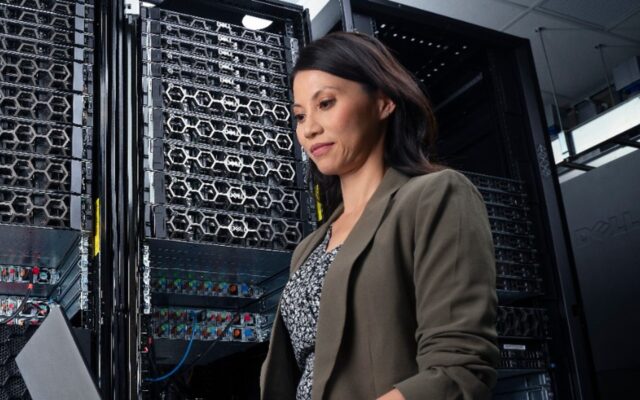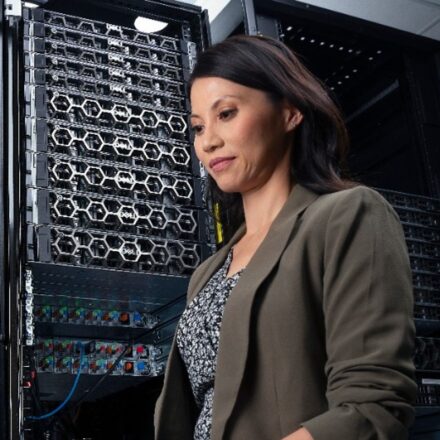You might be surprised to learn that one of the main challenges facing data centers today isn’t scalability or security. It’s energy. As servers become exponentially more powerful, they require even more power to run them. This at a time when energy costs are fluctuating and most enterprises are committed to reducing their energy usage through sustainable business practices. Fortunately, Dell Technologies has developed some really cool innovations around energy efficiency that make our PowerEdge servers featuring AMD’s fourth generation EPYC processors both more scalable and more sustainable than ever before.
Keeping Up with Rising Demands…without Catching Heat
There’s a lot more to Dell’s PowerEdge servers than just processors and storage drives. For example: air. And while you may not think about airflow when you think of a server chassis, at Dell we spend a lot of time thinking about how to optimize and improve airflow to keep energy costs low and processing performance at peak levels. Our unique Smart Cooling technology uses computational fluid dynamics to discover the optimal airflow configurations for our PowerEdge servers. Dell’s Smart Flow design, for example, enables PowerEdge servers to run at higher temperatures by increasing airflow in the server chassis, even as it reduces fan energy consumption by as much as 52%.
Improved airflow is only one aspect of our Smart Cooling initiative. We’ve also forged innovations in direct liquid and immersion cooling, which you can read more about here. And we continue to work with our partners to improve the sustainability and energy efficiency of our products through joint development initiatives—like the PowerEdge C6615 with AMD Siena, which maximizes density and air-cooling efficiency for data centers where footprint expansion is not an option.
Dell Delivers Energy Savings You Can See
Now, you may be thinking, “Those innovations sound impressive, but how do I know they’re actually saving me money and reducing energy consumption?” That’s where Dell’s OpenManage Power Manager comes into play. OpenManage Power Manager allows organizations to view and manage their energy consumption, calculate energy cost savings and track other performance metrics from their PowerEdge servers through an easy-to-navigate graphical user interface (GUI). Power Manager monitors server utilization, greenhouse gas (GHG) emissions, energy savings (based on local energy rates) and more to ensure that you’re getting the most from your PowerEdge servers while using the least amount of energy (known as power usage effectiveness or PUE).
Another tool for energy management is the integrated Dell Remote Access Controller (iDRAC). iDRAC works in conjunction with Dell Lifecycle Controller to help manage the lifecycle of Dell PowerEdge servers from deployment to retirement. It also provides telemetry data generated by PowerEdge sensors and controls, including:
-
- Real-time airflow consumption (in cubic feet per minute or CFM) with tools to remotely control airflow balancing at the rack and data center levels.
- Air temperature control from the inlet to exhaust.
- PCIe card inlet temperature and airflow.
- Exhaust temperature controls based on hot/cold aisle configurations or other considerations.
Achieving Sustainability at Scale
You can choose Dell PowerEdge servers for their legendary reliability and exceptional scalability. Many hyperscalers and enterprises do just that. But it’s nice to know that you don’t have to choose between doing what’s best for your data center and doing what’s best for the environment. With Dell PowerEdge servers featuring AMD EPYC processors, companies can increase their server performance per watt for scale workloads, reduce the amount of energy they use in their data centers, measure that energy usage in real time, automate energy-tracking policies such as power caps and proactively address energy issues before they present a problem. The complete PowerEdge portfolio for scale is available in multiple configurations and chassis heights with air-cooling and DLC options that enable significant energy savings and greater computational efficiency compared with previous server generations.
As more businesses look to balance scalability with sustainability, there’s never been a better time to consider Dell PowerEdge servers powered by AMD for your data center. PowerEdge servers with AMD EPYC processors deliver the consolidation opportunities and scalability you need to move forward, without getting burned by high energy costs. Now, how cool is that?
Learn more about Dell PowerEdge servers in our POV paper and brochure.


